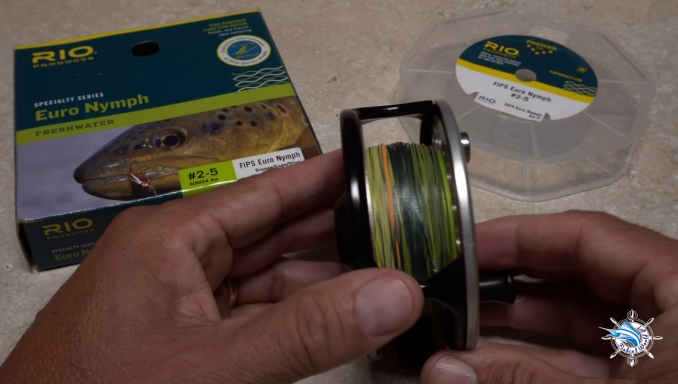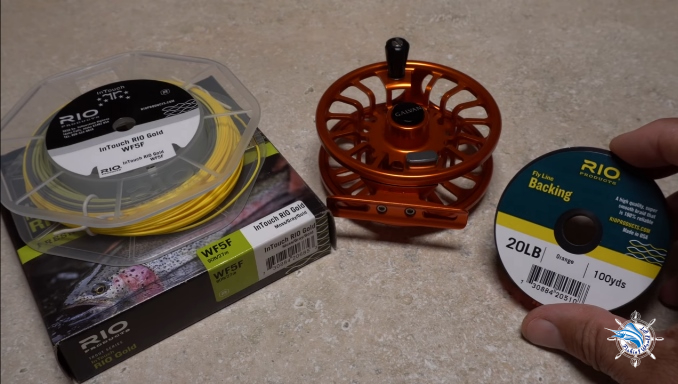How to Spool a Fly Reel?
Fly fishing is most famous as a method for catching trout grayling. But it is also used for a wide variety of species including carp, panfish, pike, and bass. Their use and structure are also quite simple.
How to spool a fly reel? Honestly, spooling of a spin cast reel is the same as spooling of a closed-face reel. Unlike a bait caster or a spinning reel, their construction is much simpler. So spooling a fly reel is also quite simple.
I have written articles about how to spool different types of reels. You can refer to them in my blog section. In this article, I will guide you on the way to spool a fly reel. Let’s get started!
Things to Know about Fly Reel
A reel foot is a vital part of the fly rod, providing anglers with an efficient line storage system and providing tension, releasing the line at customizable speeds when playing their catch. This mechanism also provides convenience by quickly retrieving the line during movements between spots or at the day’s end. With its many benefits, paying attention to your fishing reel can make all the difference in achieving that perfect cast!
Before casting your line, be sure to consider the orientation of the reel knob. To ensure traditional retrieval techniques are maintained and smooth motion is achieved, it’s recommended that non-dominant hands are used for cranking. This will mean putting the knob on either side (left or right) depending on if you’re left-handed or right-handed respectively. For instance, if you are right-handed, position it on your left side and vice versa. Additionally, keep in mind that each time should always remain close to your body when reeling in.
Which Hand Should You Reel with?
For experienced and amateur fly fishers alike, the decision of which hand to reel with is an important one. While some may prefer inside rod knob placement for its traditional benefits, many guide services opt for outside orientations due to their ability to limit tangling when dealing with beginner anglers. Maintaining this placement prevents mayhem and allows you to focus on the cast instead of worrying about snags!
If you are right-handed then don’t be surprised if your setup has a knob facing outward from your body– it just might save you time in the long run!
Do You Reel in a Fly Rod?
Guiding new fly fishers to success takes more than just handing them a rod.
Guides may choose to have knobs situated on the outside of their fly rods to help teach and shape proper fly fishing habits. By de-emphasizing reeling as a retrieval technique, guides can deter novice anglers from relying too heavily on this method – which is rarely used in modern-day fly fishing. This helps guarantee that students are learning true techniques that will translate into successful long-term skills out on the water!
While it may at first seem otherwise, anglers of even the most experienced levels are not confined to one orientation when it comes to their knob handle. To avoid setbacks due to hang-ups during casting or stripping and in return gain further control over their line, many veteran fishermen opt for a switched position; with the knob on the outside rather than inside – giving them greater freedom away from an entangled mess!
Ultimately though, switching up knob placement is an individual choice.
If you’re curious about updating your reel’s orientation preference then check out your manufacturer’s website as well as any accompanying instructions that came included – there you’ll find all kinds of educational information valuable for navigating this fishing decision.
How to Change a Right-Handed Reel to Left-Hand Retrieve?
Right-hand casters often prefer to utilize their left hand for reeling, allowing them easy access to the drag knob with their right – setting up an efficient and ergonomic fishing experience. All you need is a few simple steps and some guidance from your reel manufacturer. By adjusting the knob on the opposite side, you can alter the direction of rotation for ultimate control over each cast.
How to spool a fly reel
Now, it’s time to learn about Spooling a Fly Reel. You will follow all the steps below.
The first thing you need to do is attach the backing to the reel. And we’re going to use a simple uni knot which I’ve always called an arbor knot. But it is also a uni knot which you can use to tie your fly on, but it’s really simple.
You’re going to come around the Arbor of the fly reel. Essentially making the loop around the Arbor of the reel. Then you’re going to take that tag in, and you’re going to bring it back towards the reel. And then fold it over top of both of these standing pieces now, and that forms a loop right here. And then it couldn’t be easier. It’s an overhand knot five times you take the tag in through that loop come through five times. And then pulling on the standing end.
This is the video about How to Spool a Fly Reel:
How to tie backing to fly reel

We’re going to use a simple nail, not for that. So we’ve got at least a hundred yards of backing on the reel. And it’s got a hole in the middle so that you can insert your nail knot tool or a pen through their pencil what-have-you make the job a lot easier.
And this fly line will have some like pipe cleaners or some companies use some a little rubber-coated little band type things. But what I do is open up those pipe cleaners and fold them over the edges of the spool like this.
That allows you easy access, so the line comes off easy and also helps prevent that spool from coming apart while you’re doing this. Now it’s very important friends to understand that this weight forward fly line the rear end of it. The running line that you’re going to attach to the backing is always the accessible end. The weight forward part is the meet of the fly line. The business end is on the inside of the spool. You can’t get to that tip.
They’ve got a little sticker on here that says this end to the reel to avoid further confusion. I can’t tell your friends how often we see fly lines put on backward. The weight-forward portion is attached to the backing, and people are trying to cast with the running line wondering why they can’t cast? I won’t mention the name of any box stores, but we see it a lot, and at very, very important that you where it says this and attach this end to the reel make sure that you do that.

Pull on a leader and go fish
Remember that most if not all fly lines these days come with a loop in the end. So for now you can go loop to loop loop your leader on. You need to tie on a fly and go fishing. I’m just real quick another variation on the tie fast not tire is the tie fast combo tool. Which is wildly popular around here it’s a decent pair of nippers. But it also has like a mini tie fast not tire here on the front and then on the other side it does have a little hook sharpener. Which is of course very very important to keep your hook sharp but again same deal here exactly.
You may have nail not your leader on to the tip your fly line and having this little mini tie fast not tire there with you right on.
FAQs
Do you need backing line on a fly reel?
With the right backing on your reel, you can experience a better fly-fishing session. Generally speaking, fifty yards of 20 lb test line should do the trick – it raises the level of your fly line to secure against flying off in coils and ensures an enjoyable time out fishing! The backing can help add more line to your reel and provide an extra layer of protection in the event of a fish taking off in the long run. By adding backing, you’re also increasing the amount of drag available – which can be beneficial for tackling larger species. It’s best to consult your fly reel manual for specific instructions related to your model before attempting any major changes!
How many lines do you put on a fly reel?
You want about 30 yards of fly line using the general use combination we recommended with the fly reel. The line spools from the bottom of the reel. Keep spooling the line until it gets close but not touching the outer rim
Should the fly line come off the top or bottom of the reel?
For an optimal fly fishing experience, it’s important to always rig your line bottom-to-bottom. Doing so helps ensure the performance of the fly line isn’t hindered by any “memory” created during production and stored in its fibers. Make sure that your reel wound is taking up from–and giving out onto–the underside for a successful cast!
Is it okay to put a fly reel in water?
Fly reels can be exposed to a bit of water, but aren’t immune to wetness, so avoid over-exposure and keep water contact at a minimum. If an unexpected submersion happens, remain calm and take the time necessary to ensure proper cleaning with fresh water!
What oil is best for fly reels?
To ensure your reel is always performing optimally, it’s important to keep all moving parts clean and lubricated. Fly fishers have a range of lubricant options to ensure efficient reel performance. Fly fishing reel bearings and parts require specialized lubrication, from silicone-based, lithium-based, and graphite-based varieties – all are suitable for tackling bearing or part needs with ease. This will help protect against corrosion and maximize performance in any environment!
Should a fly reel click when you reel it in?
Fly reels must have a click-and-pawl drag, which produces an audible clicking sound as the line gets released from the reel. Fly reels emit a signature click-and-pawl sound to indicate the line is being stripped. As the angler pulls their rod back, resistance from the reel creates this distinct clicking noise – as pressure on the handle decreases, so does its volume!
What is the difference between a leader and a tippet?
The leader is the length of the monofilament line that connects your fly line to the tippet – a section of thinner, more supple, and often tied material. A leader helps ensure a clean transfer of energy when casting and prevents any potential damage to the tippet due to friction on the cast. The tippet then should be used to connect your hook or lure onto your line – it’s important to use smaller diameters for smaller flies and larger sizes for bigger ones! Leaders are typically between 7-10 feet long, while tippets range from 4-7 feet in length. Ultimately, both collectively provide a tool with which you’re able to customize your presentation in different fishing scenarios.
Can you fly fish without a leader?
Fly fishing without a leader is not recommended as it can be difficult to achieve the same level of accuracy and presentation. Your fly line does provide some surface tension against which to cast, but for optimal results, you’ll want to use a leader to transfer that energy effectively. This can help you achieve more accurate casts and ultimately better results! Fly fishing with a leader also helps protect your tippet from any abrasion caused by contact with the fly line on the cast. In addition, using a leader will give you more control over where your flies land, ensuring your presentation is on point every time!
Conclusion
Now you can tie on your favorite lure and you’re ready to go fishing. I hope you guys enjoy my article on “How to spool a fly reel?”
I hope this article is helpful to you. Do you have another idea?
Hope you got your questions answered. Good luck!
Further reading:
- Other info about fishing in Fishingandhuntingsports
- Fishing reel Wikipedia
- How to set up a fly line

